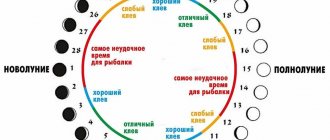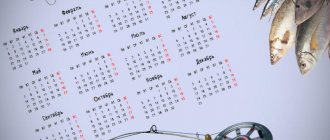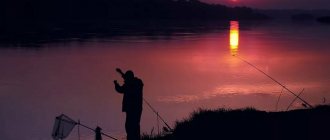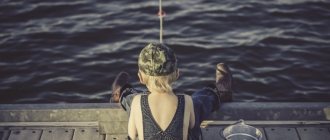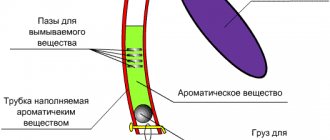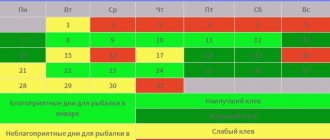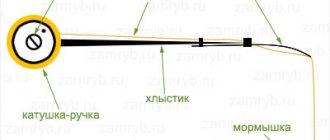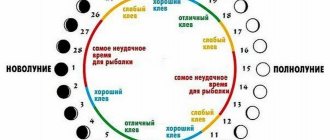Factors influencing biting
Fish are living creatures, so they are not alien to changes in feeding intensity. They are directly related to changes in environmental conditions. And also the biting activity may depend on the fisherman.
Let's briefly list these factors:
- fishing season;
- Times of Day;
- weather conditions;
- choice of reservoir;
- place of fishing;
- water condition;
- choice of bait;
- quality of the gear used.
In addition to the listed criteria, you can add those whose dependence cannot be predicted and systematized:
- the number of fishermen on the reservoir and the noise they create;
- the experience of the fisherman himself, his skills and luck;
- other surprises: for example, waterfowl, swimmers, working equipment.
Sometimes there are fishermen who manage to catch fish in public swimming areas.
Fishing in autumn
With the arrival of autumn, serious changes occur in the underwater world. Aquatic plants begin to wither and sink to the bottom, small animals burrow deep into the mud. This means that it has become more difficult for fish to find food, so they willingly bite on the bait offered by the fisherman. In addition, in the fall, peaceful fish migrate from summer “lands” to wintering pits, and predators follow them.
Perhaps for some, autumn is a dull time of year, but not for a fisherman. Compared to summer fishing, autumn fishing is more comfortable. The unbearable heat was replaced by pleasant coolness, annoying insects disappeared, and promising places that had recently been overgrown and now cleared of vegetation became accessible.
Autumn fishing is not just about decent catches. During this period, you must always be prepared to catch a real trophy, because not only small fish, but also large individuals fatten up their fat for the winter.
We suggest you familiarize yourself with: Fishing with Bolognese Tackle
What is the best time to fish?
The time of day, from the point of view of fish bite, is inextricably linked with the season of the year. Therefore, we will consider these two factors together.
Spring
Fish awakens from winter hibernation in the spring. Even those species that pecked in winter become more active when meltwater enters the ice. Most underwater inhabitants are preparing for spawning, so they bite throughout the daylight hours, and even in the dark they do not stop feeding.
At the same time, you need to understand that you can freely fish during the spawning ban period only on paid reservoirs, if the owner allows it. On public reservoirs in Moscow and throughout Russia, restrictions apply in accordance with the Rules in force in each region, which you need to familiarize yourself with before going to the reservoir.
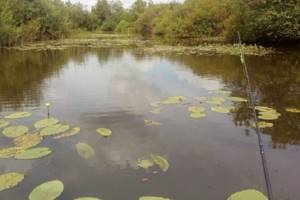
In most regions, during the spawning ban, you can only fish from the shore using a float or bottom fishing rod with one hook.
Attention! Spinning fishing and fishing from boats during spawning is prohibited!
After spawning, the second peak of fish bite occurs, when it regains its strength devoted to the reproduction process. The intensity of the zhor is inferior to the pre-spawning one, but the bite is still good.
Here the activity is gradually shifting towards the dawns. The best time for fishing is in late spring in the morning before noon and in the evening.
Benefits of night fishing
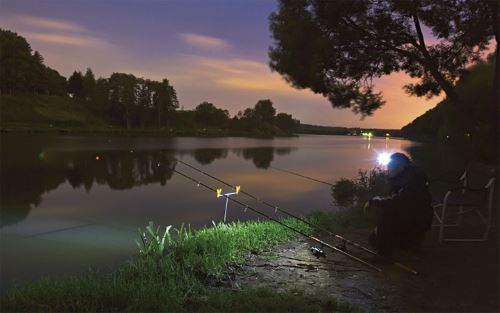
- The effect of night fishing is often much greater than that of daytime fishing, and even in the dark, large fish are caught more often.
- The activity of trophy specimens increases significantly, driving small fish away from your bait and eliminating the hassle of constantly casting gear.
- The fisherman at night is completely immersed in the fishing process and nothing bothers him.
The wind begins to subside towards evening, and the surf wave decreases significantly and fishing becomes more comfortable. And at night the air temperature is slightly lower than during the day. The fish feels more comfortable, and accordingly it develops an appetite and begins to bite much better.
True, there is a significant drawback - poor visibility greatly interferes with comfortable casting and fixing bites. Therefore, there is a high probability of tangling of gear; accordingly, it is recommended to take gear with a reserve so as not to waste time on untangling and re-installing it.
https://youtu.be/4ZvlJwgwucY
Weather conditions
If nature does not have bad weather, then from the angler’s point of view this is far from the case. All meteorological conditions, one way or another, affect the fish bite.
Pressure
With increased pressure, fish rise to the surface, so it is best to catch representatives of pelagic species. Pike can also hunt at the top.
When the level decreases, the fish, on the contrary, tend to go deeper. In this case, the bite is usually better for almost all representatives of the ichthyofauna.
The most favorable alignment is observed for several days in a row, despite its indicator. The fish gets used to it and begins to feed more actively. Changes most often reduce the intensity of the bite.
Wind
Optimal for fishing is a slight breeze that raises light ripples on the surface. In this case, the water is saturated with oxygen and the surface situation is masked.
Prolonged calm leads to stagnation, a decrease in the level of dissolved oxygen, and, as a result, low activity of underwater inhabitants.
Strong winds thoroughly mix the layers of water, which negatively affects the living conditions of fish. In addition, fishing becomes very difficult, it is difficult to cast gear.
Rain
Light rains, especially warm ones, have a beneficial effect on the bite. They bring oxygen, mix the top layer, deliver food to the reservoir, washing away various spider beetles from the banks.
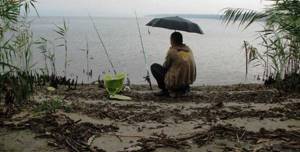
Falling raindrops create ripples on the surface, camouflaging the fisherman located on the shore.
Heavy rain prevents the fisherman from fishing, and also drives the fish to the bottom in secluded places. But after it, especially if the sun comes out, the time will come favorable for fishing.
Temperature
Moderate air temperatures are considered to be the best in all seasons. There is no bite both in extreme heat and in “dog-like” cold. In addition, in such weather the fisherman is uncomfortable on the pond.
Summer fishing
Summer is vacation time. Many people use their honestly earned three to four weeks of vacation to go to the sea, but not fishermen. People who are passionate about fishing will never waste their free time like that. They have been waiting for this moment for a whole year, and now they are immersed in what they love.
Fishing in summer has its own characteristics. The main thing is the abundance of food in reservoirs. Underwater inhabitants are well-fed, so it is not always possible to seduce them. To succeed in summer fishing, you need to know all its intricacies: the habits of fish, their food preferences, the influence of weather on biting, and others. You can count on a good catch in early June, when many species are recovering from spring spawning. By the end of the month, activity decreases, and not only because of the abundance of plant foods.
We suggest you familiarize yourself with: Top 10 best wobblers for asp: how to choose a wobbler for asp || Rating of the best wobblers for asp
Another reason is the massive emergence of mayflies, which are a delicacy for peaceful fish. In July, the sun strongly warms the upper horizons, forcing the inhabitants of reservoirs to descend to depth. At this time, fishing in shallow water near the shore is unlikely to be successful. Blooming water also has a negative impact on fishing.
But an experienced fisherman, even in the July heat, will find a way to catch pike, bream, pike perch, asp, roach or perch. In August the situation changes for the better. Around the middle of the month, the temperature begins to gradually decrease, the water cools down, and the fish become more active every day. The fisherman only needs to find places where it accumulates, correctly assemble the gear and offer a catchable bait.
Choosing a reservoir and fishing location
You can often hear the phrase: you can’t catch fish where there are none. This is only partly true. It is rare to find a body of water completely without fish. The main thing in choosing a fishing place is the right time.
You need to know what season, where and who to catch. To do this, you need to know the habits of the fish, where they stop depending on the time of year. For example, it is useless to catch burbot close to the shore in summer, but in October-November it can go to a point that is closed in summer.
It’s the same with a specific place. If the fish is close to the shore, you cannot catch it on a long cast and vice versa.
Benefits of day fishing
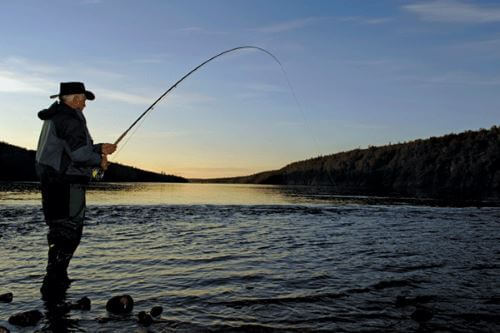
- Excellent visibility allowing for long casts.
- Fewer insects that interfere with comfortable fishing.
- Significant increase in activity of some fish species.
Some species of fish bite exclusively during the day, and at night they prefer to lie down in holes and refuse to feed. Therefore, choosing the best time for fishing depends solely on the habits of the object being fished.
And even in the cold season, for example in autumn, the air temperature rises during the day, which means you will feel much more comfortable while fishing than on a cold and damp night. So, the choice is entirely yours.
Water condition
By water condition we understand several factors. Depending on them, the activity of the fish, the method of catching it and the gear used may change.
Let's list the main ones:
- Level. A change in water level depending on drought or rain forces the fish to move around the reservoir and look for new locations for parking.
- Transparency. In muddy water in summer, oxygen decreases and the fish become passive.
- Herbaceousness. From a fishing point of view, an overgrown pond or other body of water plays a double role: fish like to hide in the grass, but it becomes more difficult to catch them.
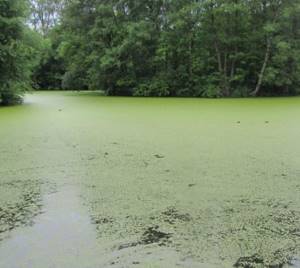
A pond overgrown with duckweed is by no means a lifeless body of water. It’s all the more interesting to catch a trophy here.
Fishing in September.
Autumn has come, but warm days still delight fishermen. With the advent of cold weather, the fish prefers to swim to depths. In September it is good to fish from a boat so that you can make long casts. Pike and perch bite well on live bait and spinners. Perch also fishes well with a worm. Asp in September can be caught exclusively with live bait. The bite for catfish, ide and bream is ending. A good catch of roach can be obtained in September. Dace, ruffe and gudgeon bite well. You can use a frog to catch burbot.
General habits of fish in autumn
Early autumn. Water temperature up to +10
The summer behavior of fish can persist for quite a long time, conditionally until the water temperature drops below +12 - +10, although it also indirectly depends on the weather. In any case, if the weather is dry and warm, you can count on a good bite according to summer rules.
With the onset of cold weather, the active bite during the day disappears. If in the heat there may be several peaks of biting during the day, now we can distinguish only two main but distinct peaks in the morning and evening.
The predatory fish is actively fattening up fat; it will not have this opportunity again until the next warm season. The pike begins to eat, comparable to pre-spawning.
Mid-autumn period. Water temperature from +10 to +4
This is truly autumn fishing. Vegetation dies off, the water becomes cleaner, plankton goes deeper. This means that the food supply for most fish species has changed greatly.
It would seem that since there is less food, the fish should bite more actively? Yes and no. Carp become lethargic due to a decrease in water temperature, and increased transparency further increases the requirements for the fineness of gear, but due to the fact that the fish begin to flock into large schools, the average bite is quite good.
Predators follow their prey into the depths, and their activity also slows down. Clear water makes them very picky in their choice of bait, this is the time for realistic wobblers or live bait fishing.
Late fall. Water temperature below +4
The fish is preparing for winter. Large carp gather in huge schools in wintering pits, and in the next 3 months they will not be stirred up. Small roach and crucian carp continue to feed on the shallows throughout the day and evening, and a predator also lives next to them. The predator's bite shifts to twilight peaks, it saves its strength and attacks only when it is sure of success.
During this period, fishing is the least effective, and you have to study the habits of each type of fish that you plan to catch.

